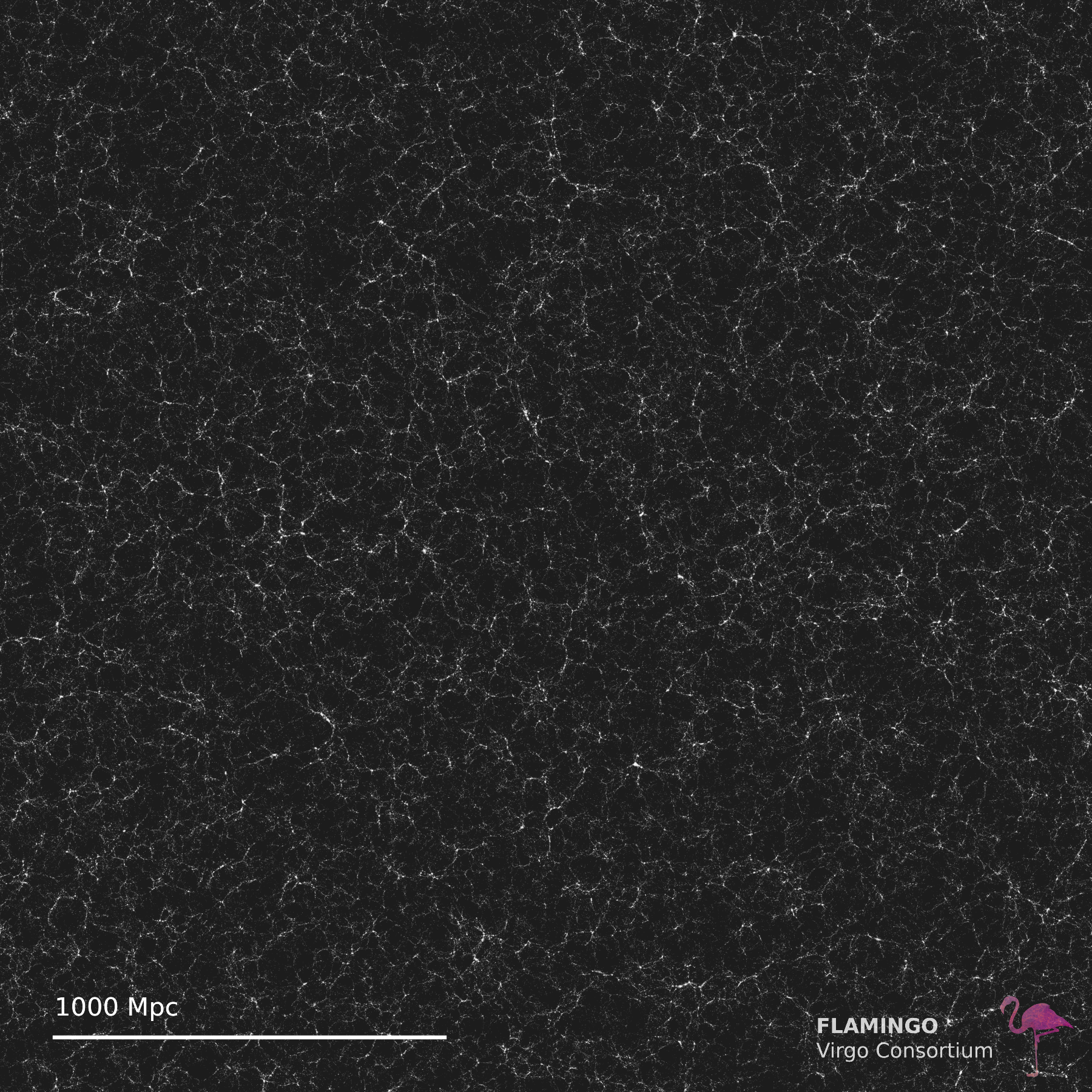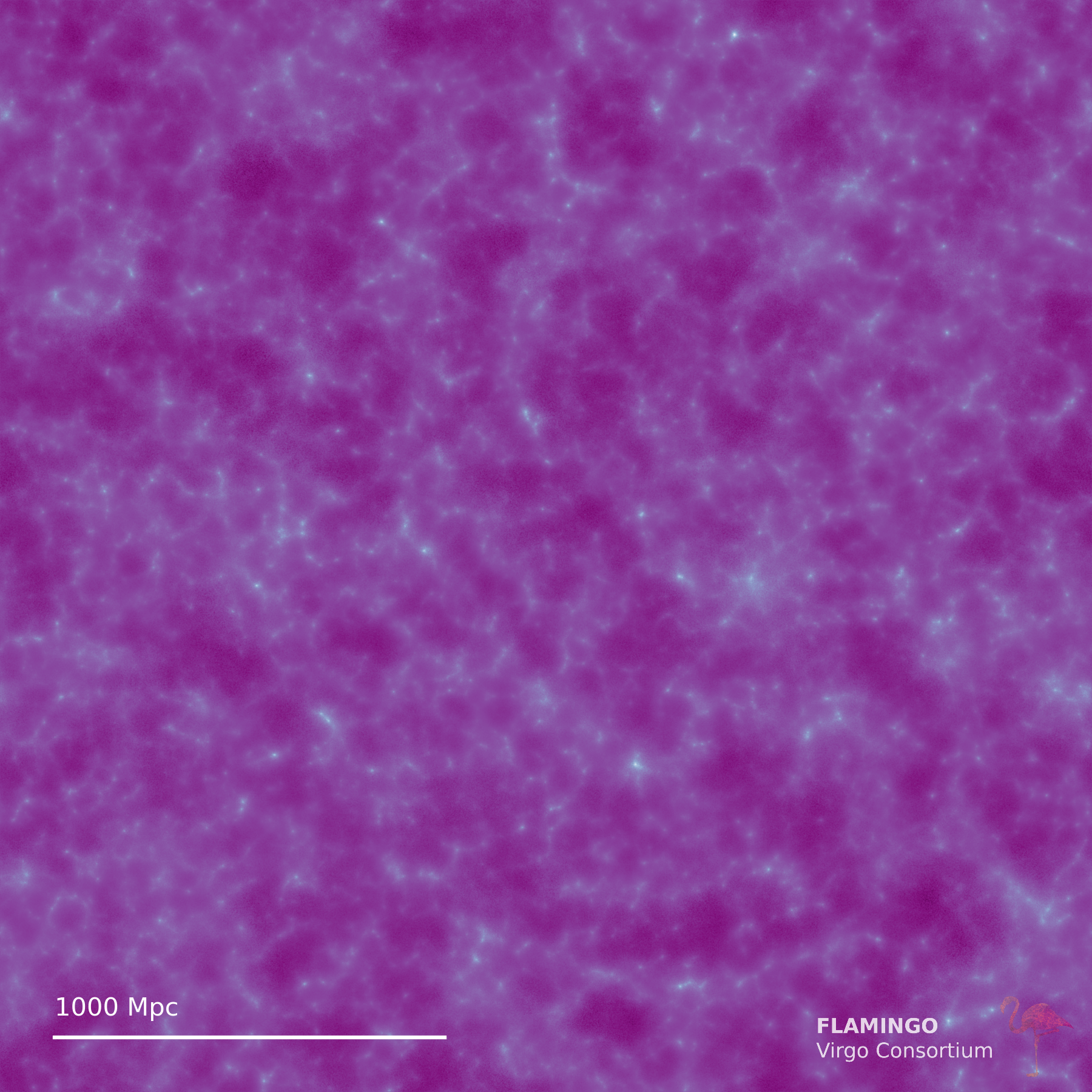Largest-ever computer simulation of the universe escalates cosmology dilemma
"I am at a loss."
We see countless stars and galaxies sparkling in the universe today, but how much matter is actually there? The question is simple enough — its answer, however, is turning out to be quite a head-scratcher.
This dilemma exists largely because current cosmological observations simply disagree on how matter is distributed in the present-day universe.
Of some help could be a new computer simulation that traces how all elements of the universe — ordinary matter, dark matter and dark energy — evolve according to the laws of physics. The breathtaking visuals virtually show galaxies, and clusters of galaxies, manifesting in the universe, fed by the so-called cosmic web. This web is the largest structure in the universe, built with filaments made up of both normal matter, or baryonic matter, and dark matter.
Unlike previous simulations that only considered dark matter, the new work, carried out by a project called FLAMINGO (short for Full-hydro Large-scale structure simulations with All-sky Mapping for the Interpretation of Next Generation Observations), tracks ordinary matter too.
Related: Do we live in a simulation? The problem with this mind-bending hypothesis.
"Although the dark matter dominates gravity, the contribution of ordinary matter can no longer be neglected," Joop Schaye, a professor at Leiden University in the Netherlands and a co-author of the three new studies on the FLAMINGO project, said in a statement.
As for how much matter the universe really contains, astronomers say computer simulations like this one are not just great cosmic eye candy but also important probes to help pin down the cause of a major discrepancy in cosmology called the "S8 tension." That's the debate over how matter in the cosmos is distributed.
Breaking space news, the latest updates on rocket launches, skywatching events and more!
What is the S8 tension?
When investigating the universe, astronomers sometimes work with what's known as the S8 parameter. This parameter basically characterizes how "lumpy," or strongly clustered, all the matter in our universe is, and can be measured precisely with what are known as low-redshift observations. Astronomers use redshift to measure how far an object is from Earth, and low-redshift studies like "weak gravitational lensing surveys" can illuminate processes unfolding in the distant, and therefore older, universe.
But S8's value can also be predicted using the standard model of cosmology; scientists can essentially tune the model to match known properties of the cosmic microwave background (CMB), which is the radiation leftover from the Big Bang, and calculate the lumpiness of matter from there.
So, here's the thing.
Those CMB experiments find a higher S8 value than the weak gravitational lensing surveys. And cosmologists don't know why — they call this discrepancy the S8 tension.
In fact, S8 tension is a brewing crisis in cosmology slightly different from its famous cousin: Hubble tension, which refers to the inconsistencies scientists face in pinning down the rate of expansion of the universe.
The reason it's a big deal that the team's new simulation doesn't offer an answer to S8 tension is, unlike previous simulations that only considered the effects of dark matter on an evolving universe, the latest work takes into account the effects of ordinary matter too. In contrast to dark matter, ordinary matter is governed by gravity as well as pressure from gas across the universe. For example, galactic winds driven by supernova explosions and actively accreting supermassive black holes are crucial processes that redistribute ordinary matter by blowing its particles out into intergalactic space.
However, even the new work's consideration of ordinary matter as well as some of the most extreme galactic winds was not sufficient to explain the weak clumping of matter observed in the present-day universe.
"Here I am at a loss," Schaye told Space.com. "An exciting possibility is that the tension is pointing to shortcomings in the standard model of cosmology, or even the standard model of physics."

Gas

CDM

Stars

Neutrinos
Exotic physics or a flawed model?
So, where did this S8 tension originate?
"We don't know, which is what makes this so exciting," Ian McCarthy, a theoretical astrophysicist at Liverpool John Moores University in the U.K. and the co-author of three new studies, told Space.com.
Computer simulations, however, like those carried out by FLAMINGO could be bringing us a step closer. They may help reveal the cause of S8 tension because a grand, virtual map of the cosmos might assist with identifying possible errors in our current measurements. For example, astronomers are slowly ruling out more mundane explanations for the issue, such as the fact it could be due to general uncertainties in observations of large-scale structures or related to a problem with the CMB itself.
In reality, the team speculates, perhaps the effects of normal matter are a lot stronger than in current simulations. That too seems unlikely though, as simulations agree very well with observed properties of galaxies and galaxy clusters.
"All of these possibilities are extremely exciting and have important implications for fundamental physics and cosmology," said McCarthy. The most exciting possibility, however, "is the Standard Model is incorrect in some way."
For example, dark matter could have exotic self-interacting properties not considered in the standard model — the S8 tension may be signaling a breakdown of our theory of gravity on the largest scales, McCarthy said.
Nonetheless, while the latest simulations track effects of normal matter and subatomic particles known as neutrinos — both of which are found to be important to make accurate predictions of how galaxies evolve across eons — they did not resolve the S8 tension.
Here's the ultimate head-scratcher: At low-redshifts, the universe is significantly less lumpy than predicted by the standard model. But measurements that probe structures of the universe between the CMB and low-redshift measurements are "fully consistent with standard model predictions," McCarthy said. "It seems the universe behaved as expected for a significant fraction of cosmic history, but that something changed later on in cosmic history."
Maybe the key to resolving the S8 tension lies in the answer to what, exactly, drove that change.
This research is described in three papers published in the journal Monthly Notices of the Royal Astronomical Society.

Sharmila Kuthunur is an independent space journalist based in Bengaluru, India. Her work has also appeared in Scientific American, Science, Astronomy and Live Science, among other publications. She holds a master's degree in journalism from Northeastern University in Boston.
